Cancel
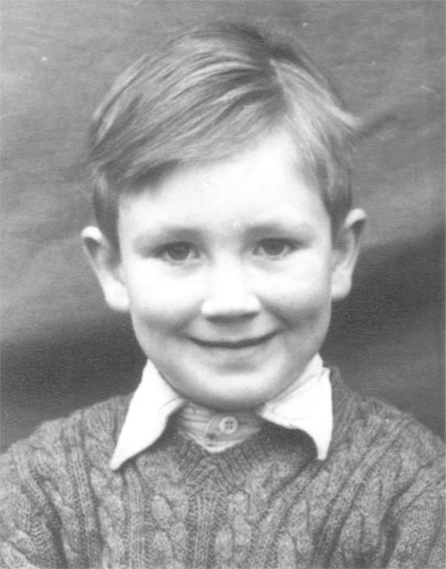
1964
Founded in 1964 as Contractrol Ltd, later changed to Microspot Ltd
My name is Robert Coulling and I am a director of Microspot Ltd which was founded in 1964 as Contactrol Ltd. The company was formed to exploit an invention by Bill Beckingham, one of the directors who founded the company. It was a solid state fuel flowmeter to measure fuel consumption of a car as it drove along the road. This is on almost every car today but was a revolutionary idea in those days.

1966
Flowmeter idea patented, developed and sold to motor manufacturers
When I joined I spent much of my time building and calibrating the flowmeters. The idea was patented worldwide and models were developed and sold to motor manufacturers and a consumer model produced, but the idea did not sell as well as had been hoped.
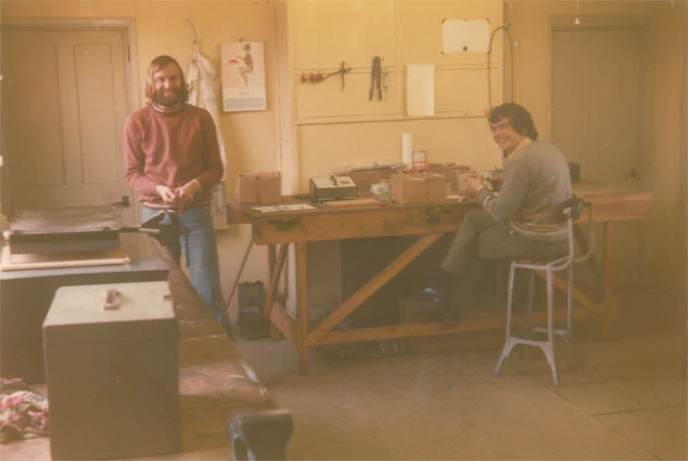
1967
We moved into solid state control systems for photocopyers
The company changed direction and developed solid-state control systems for photocopiers for the Solicitors Law Stationery Society (SLSS) who manufactured the machines in London. At the height of the business we even manufactured a desk top copier complete called the Verna.
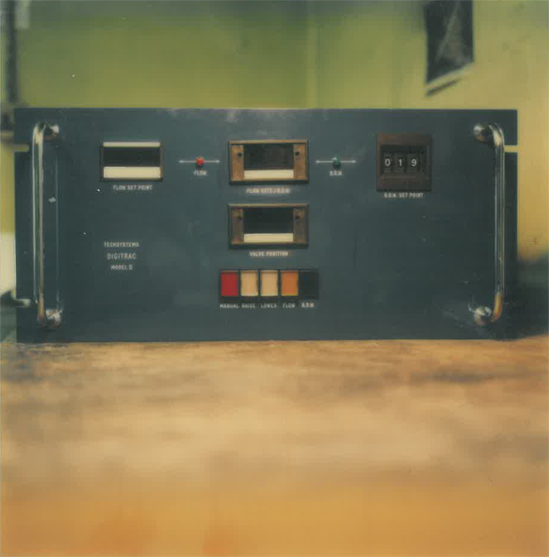
1968
We manufactured a desktop copier complete called the Verna
We made 200 “Verna” before the Japanese entered the photocopier market with excellent low cost machines. The SLSS was really in the business to sell paper and toner so they decided to buy Japanese machines and close their factory in London. This was a major blow, which meant another change of direction for the company.
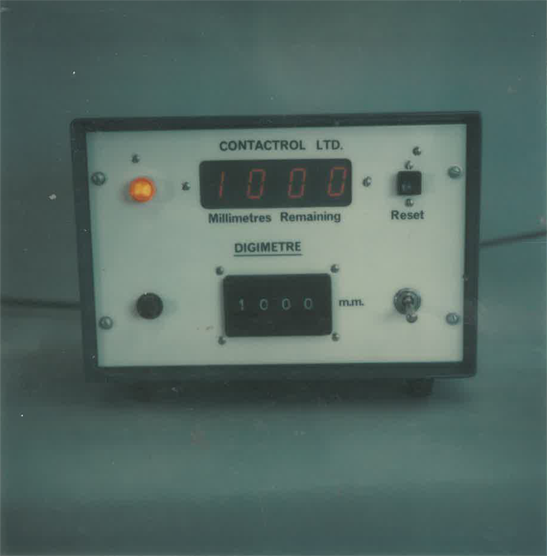
1970
Industrial control equipment for the paper and plastics industries
We started to develop industrial control equipment for the paper and plastics industries. We made process timers, batch counters, a length measuring device for extruded plastics and a controller for paper making machines called the Digital Indicating Controller. We also made custom solidstate controllers for various industrial processes and at the end of the 1970’s became interested in using a computer to control processes rather than design custom electronics for each process.

1979
Apple Dealership taken with Microsense Computers in Hemel Hempstead, UK
At the same time my father’s company was looking to buy a computer to do payroll and accounting so I was asked to look at the available computers to select the best one for the purpose. Another company associated with us was also looking to buy a CNC milling machine from Bridgeport Machines. The only suitable computers were Apple Tandy and Commodore Pet. I visited dealers for each one and I liked the Apple best. I decided to take a dealership with Microsense Computers in Hemel Hempsted who were the distributors of Apple computers in the UK at that time. You had to buy three Apple II computers and a Paper Tiger Printer, one computer for demonstration purposes and two computers for sale.

1980
We changed the company name to Microspot Limited
We could not sell computers from our workshop in Harrietsham so I rented more presentable offices in Lenham Village and decided we needed a different name, so in 1980 I changed it to Microspot Ltd. We set out to sell Apple II’s to local businesses for payroll, accounting and other uses. We opened for business in August and by the end of November we had only sold the two original machines that we had to buy with the dealership. At last in December there was a rush of orders and the dealership took off.

1981
Roger Holmes joined the company as a director
One computer was sold to Roger Holmes who was helping us with the CNC development project and I realized that we needed a programmer of his rare talent in 1981 I offered him a job and then shares in the company and he became a director.
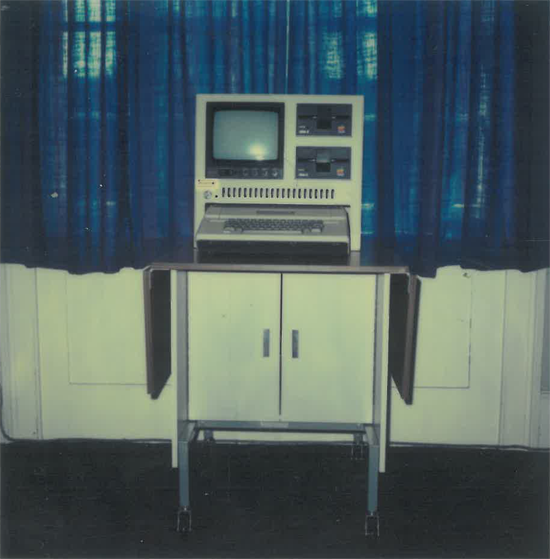
1981
Modified Apple Writer software to be sold as a CNC talker
The CNC project was doing well and Microspot was selling a programming station for CNC machines through Bridgeport Machines in Leicester. Roger Holmes had modified the Apple Writer word processing software from Apple and we were selling it as CNC Talker, which allowed users to create CNC programs on their Apple II and save them to floppy disk. The Apple could then be connected to the CNC machine and the program downloaded through the serial RS232 port. This replaced the use of punch tape. If during running, the program was edited, it could then be uploaded from the CNC machine and saved on floppy disk. We made the whole system, which comprised an Apple ll and dual disk drive with monitor and printer. It was housed in a metal case and mounted on a table with wheels that could be wheeled around the workshop and connected to a number of different CNC machines.
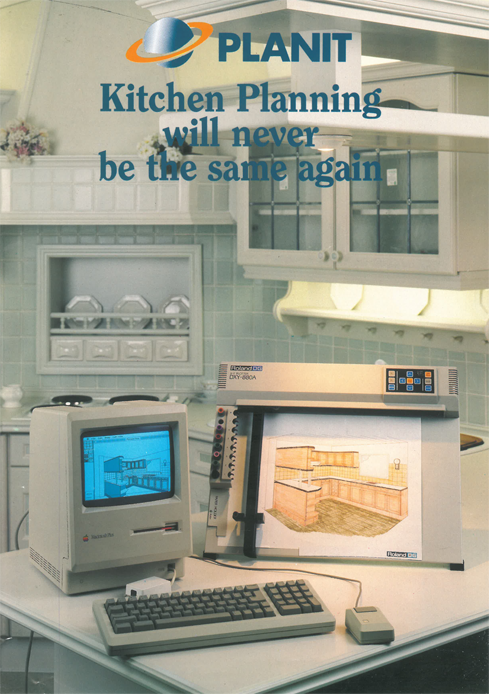
1983
Development of a 3D kitchen design application with Trevor Semadeni
About this time we were also visited by Trevor Semadeni, who owned several kitchen showrooms in the Kent area. He had won an Apple II in a competition and it came with a kitchen design program. He said the program was useless and wanted us to develop one for him. We quoted for the job and started to write it on the Apple II. I believe we quoted about 14 weeks to complete the original task but it was extended and we moved it to the Apple III and then to Lisa and then to Macintosh.
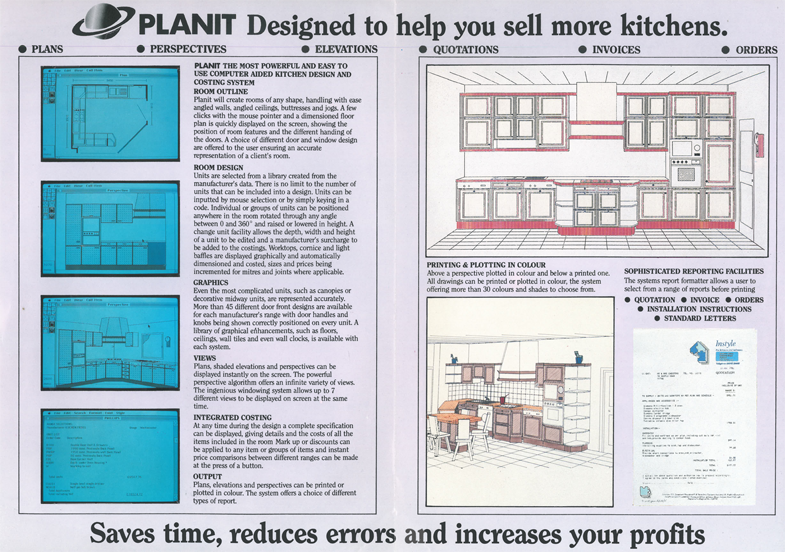
1983
3D kitchen design application "Planit" released worldwide
The full-featured 3D Kitchen Design program was called Planit and was very successfully sold by Trevor Semadeni’s company Icads in the UK, Germany, France and the US.
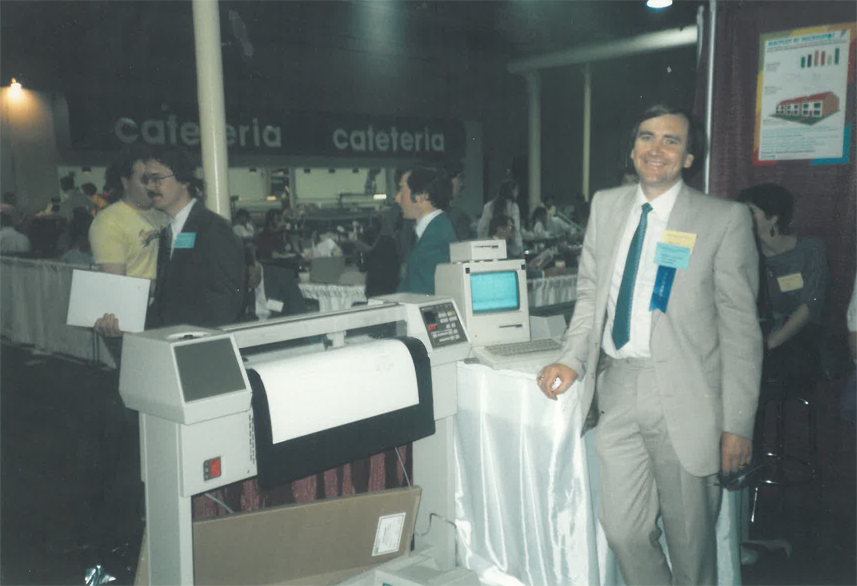
1984
Invited to the Comdex show and the first MacWorld show by Apple
In November 1984 Apple invited us to show MacPlot at the Comdex Show in Las Vegas. We also showed at the very first MacWorld show in January the next year in San Francisco. Every year after that we exhibited in San Francisco and Boston. We found a US distributor who also distributed MiniCAD (which later became Vector Works). Apple recognized MacPlot as a possible bundle product and we were contracted to rewrite it as a device driver, which was then bundled with MacDraw, MacPoject and later Claris Works.
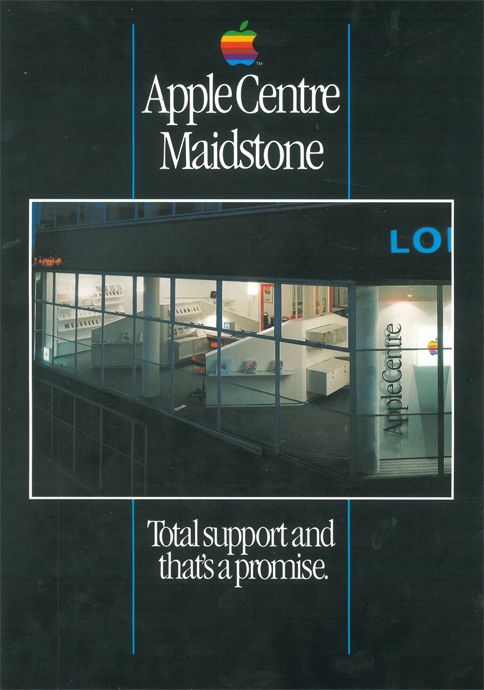
1986
Opened an Apple Center in Maidstone, Kent, UK to market Apple computers
In 1986 we opened an Apple Center in Maidstone and began marketing Macintosh hardware and application system solutions in the UK. We continued selling Apple Hardware until 2000.
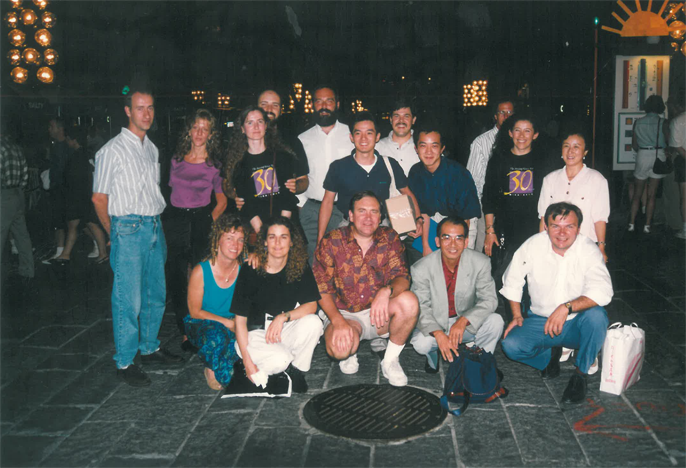
1988
Joint office opened in Cupertino
In January 1988 I was in San Francisco for MacWorld when I met Juha Christensen, a Dane that I had met originally the previous year at our Apple Centre in Maidstone. We went skiing at Lake Tahoe after the show and decided to open a joint office in Cupertino that Juha would manage. He was to sell our software and his mouse cleaning device. This period was very successful for us. We acquired distribution in Japan through the MiniCad distributor there called A&A. MacPlot sold really well in Japan and through all the other Minicad Distributors in Europe.
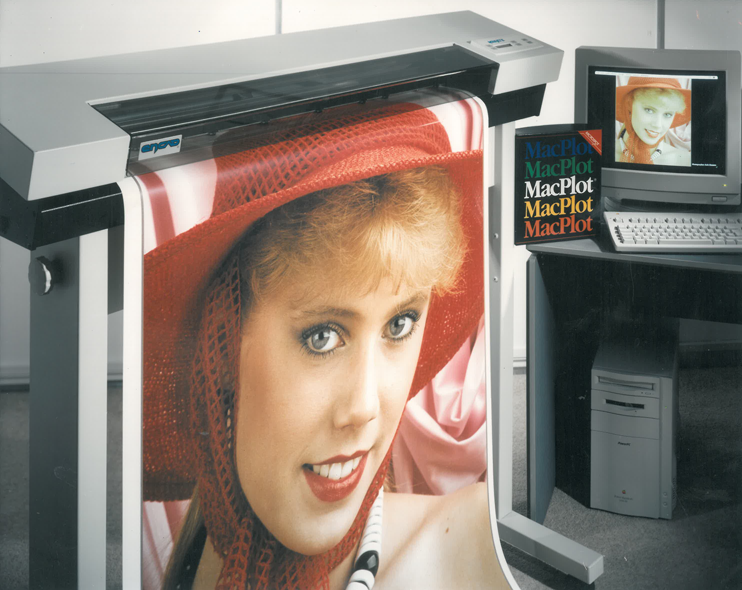
1988
We were the printer and driver experts for Mac for some years
Roger Holmes decided that he could also write a driver for the Apple Imagewriter II printer that printed colors although the Mac was not color at that time. MacPalette II, as we called it, allowed the users to map a pattern to a color and it only took a few days to write using the MacPlot code and yet sold thousands of copies. We also met a company in San Diego California that was producing a wide format inkjet printer called the Novajet. We wrote a driver for this and it utilized a serial/parallel interface card for the Mac that we were manufacturing to drive parallel or serial printers. HP also followed with wide format printers and we sold drivers for those too. We actually also drove a large electrostatic printer with a Mac using a DMA (direct memory access) interface card also manufactured by us. So for some years we were the printer and plotter driver experts for Mac. Although the manufacturers wrote their own drivers for Windows machines they did not do it for Mac, which was good for us.
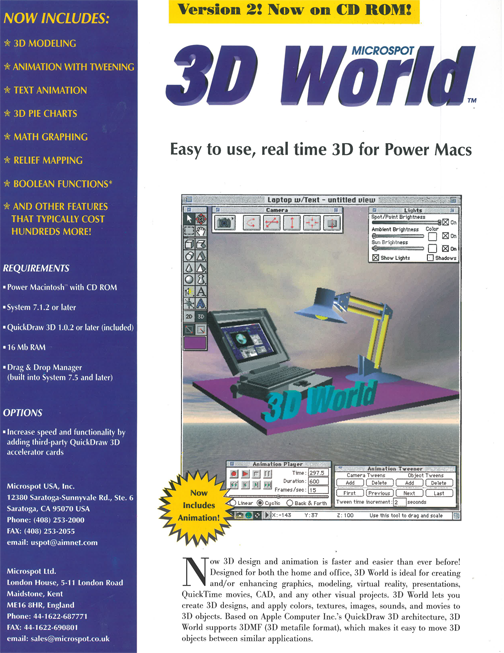
1989
A huge recession in the UK, caused the kitchen business to dry up
At the end of the 80’s the UK was hit by a terrible recession. The venture with the kitchen design had done well and we were also supplying Ioads with about £1M pounds worth of Apple hardware every year. The kitchen business suddenly dried up because people could not afford to remodel their kitchens and a big hole was left in our UK business. We had been financing the Mac purchases over several months and when the income dried up we struggled to pay our debts. We had some luck and although we had to sell out our interest in the kitchen business we survived. We retained the right to use the code for Planit as long as we did not use it for kitchen design and we set out to write a 3D modeller called MacInteriors but at that time Apple had introduced Quickdraw 3D (QD3D) and we scrapped our code and used QD3D to produce what would be our next product 3D World.
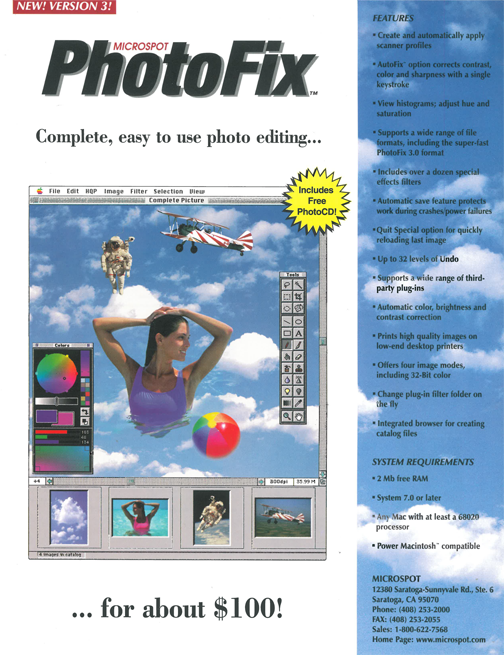
1994
PhotoFix bought from French company Le Pixel and sold worldwide
We met a French company Le Pixel, that was looking for distribution of its photo editing product called Colorstation. We decided to sell it and renamed it PhotoFix. It was a simple and cheap product like Photoshop. Later the owner of the French company decided to sell and we bought PhotoFix in 1994. This product did not sell well in retail because Apple introduced iPhoto but we partnered with a California company called Arcsoft who wrote a similar product for Windows. They arranged bundle deals with all the scanner and digital camera manufacturers like Sony and Nikon and it was translated into 6 languages and sold worldwide with these devices.
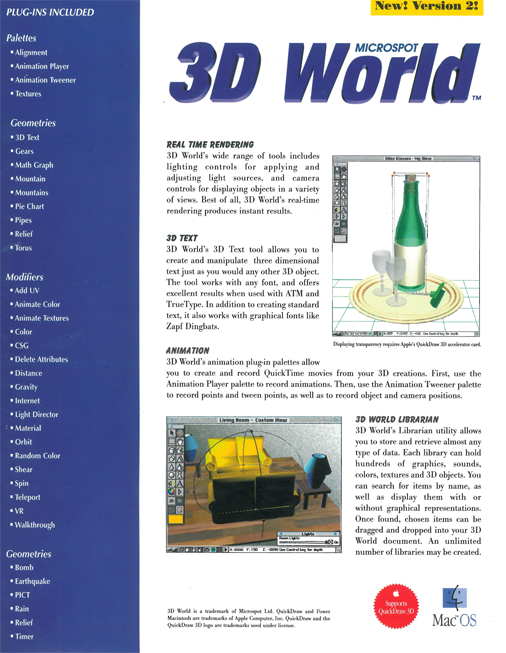
1995
Version 1 of 3D modelling software "3D World" finalised and launched
We saw the end of our driver business coming as more companies wrote their own Mac drivers so we had to move on. In 1995 we released Version 1.0 of “3D World”. It was written because we knew about 3D and it was greeted with acclaim at MacWorld. We sold a good number of copies but it did not sell as well as we hoped.
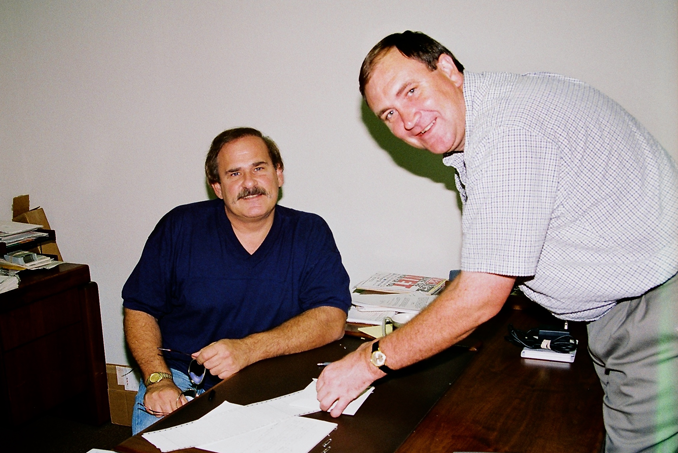
1995
Started a long relationship with IDD and supplied plotter drivers to them
In 1996 we bought MacDraft a professional 2D design and drafting tool for the Macintosh. I had known MacDraft since I went to MacWorld S.F. in January 1985. I was told about a company called IDD Inc in Concorde California that was writing a competitor to MacDraw called MacDraft. MacDraw had been announced and released in beta but it was not on sale which was an opportunity for MacDraft. I went to their offices because I was interested in us supplying them with a plotter driver and met Paul King the CEO. It was the start of a long relationship. They actually managed to release MacDraft before MacDraw and the next time I visited their offices they had twin Corvettes parked outside for the two founders. MacDraft was a big success and we did supply them with a driver and I visited them every time I was in California.

1996
We purchased MacDraft fromm IDD in 1996 and began selling it ourselves
I had not heard much about MacDraft for some time so I called Paul King and asked him what was happening. He told me that he had retired and he just went to the office one day a week to answer tech support and ship product. They had been outsourcing development for some time and disbanded their own development team. I asked him if he would like to sell it and he agreed. Over the years we have made some major upgrades to MacDraft. We brought it to Intel and to OS X. It has been a great success and we have created MacDraft Personal Edition for home users and DWG Viewer from it.
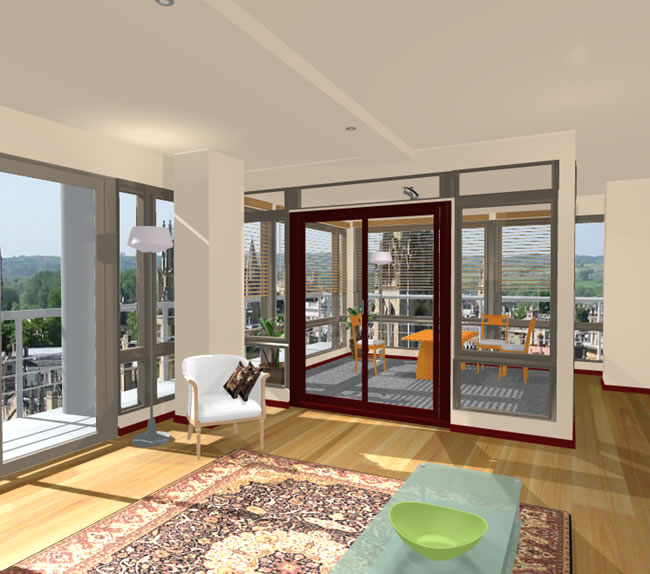
1998
Released 3D room layout application called "Microspot Interiors"
As 3D World was not the success we had hoped we decided to change the emphasis from 3D modelling to room layout/interior design and redeveloped 3D World. We added renderering software and Quicktime movie walkthroughs making it useful to home users and professionals. We released Microspot Interiors in 1998.

1999
Gilamelio and Steve Jobs joined forces bringing Apple back into the market
Around this time Apple were doing very badly and I remember being in Cupertino and meeting Gil Amelio the CEO. I did not think he was right to lead Apple and their future was in doubt. There were terrible problems because the Copeland operating System which had been promised for so long had not appeared and Apple were in talks with Jean Louis Gassée of Be about buying their operating system. Apple sales were very bad and then there was a serious crisis in the Far East and our sales to Japan were suddenly reduced. We decided we could not continue with our US office and we made MacroEnter Inc. our distributor in the US and closed the office and returned to the UK. Luckily Gil Amelio purchased NextStep from Steve Jobs and bought him back into the company and we all know what happened after that. As it happened Gil saved Apple.

2000
Closed Apple Center Maidstone and sold authorized service provider
We have since concentrated on our software products and as distribution became easier with digital download we have not needed offices elsewhere. We closed our Apple Center in Maidstone and sold off our Authorized Service provider business to concentrate only on software developement and sale.

2003
MacDraft Personal Edition was released aimed at home users
In 2003 we released MacDraft Personal Edition (PE), which was a stripped down version of MacDraft Professional. Although it had features removed, it still retained much of the power of its big brother, but at a fraction of the cost. It was aimed to bring floor plan design and vector illustration to the home user, while providing an easy-to-use and affordable application.

2007
Interiors Pro released and won Best of Show at MacWorld
Interiors Professional was released in 2007 and won the prestigious “Macworld Best of Show” award at the 2007 London expo.

2010
MacDraft 25th anniversary edition released in 2010
In 2010 MacDraft celebrated it’s 25th anniversary and to mark this occasion we released the all new MacDraft 25th Anniversary Edition. This was a huge success, reinforcing the importance of MacDraft not only to us but to our customers.

2010
App Store announced for the Mac
We took a few moments to enjoy the success of the 25th anniversary released, but the break was short lived, as Apple had announced the release of the Mac App Store. This would be a new platform to promote our products whenever a new Mac was purchased. We had to make some minor changes to our products to prepare them for App Store submission, and in late 2010 we shipped MacDraft Pro, MacDraft PE and DWG Viewer on the Mac App Store.

2014
MacDraft Version 6.1 and extra libraries released
We have been developing additional vector symbol libraries such as Home Plan Graphics to support our existing CAD users and working to improve MacDraft. We began to add new features to our 2D CAD range and in mid 2014 we released a new version of MacDraft, boasting a large number of new features, interface updates and functionality improvements. This proved to be a huge success with a huge number of upgrades from existing users and new customers joining us from different areas of the industry.

2014
MacDraft Limited Edition released
This brings us to the present and at the end of 2014 Microspot celebrated its 50th anniversary. To mark the occasion we have released a MacDraft Limited Edition package, which included a rebranded product, 7 additional vector symbol libraries, exclusive merchandise and a signed certificate of authenticity.

2016
MacDraft 6.2 released
After a period of development we released MacDraft 6.2, which brought a whole host of new features, options and benefits to speed up the users design process, boost creativity and give the most complete 2D CAD package yet! In addition we also released bundles containing time saving library items. This is when the MacDraft Home and Garden, Starter and Complete packs were born.

2017
DWG Viewer 2.0 released
We spent a while bringing DSG viewer up to date as it had been left alone for too long. DWG Viewer is an easy to use app for viewing your AutoCAD DWG and DXF files from your PC on the Mac. Open your DWG and DXF files with ease and without file size restrictions, then annotate them with your own comments. In addition you’ll be able to save your annotated DWG files as an flattened scaleable PDF file.

2019
MacDraft 7.0 64- bit released
Apple announced a while back that they would be bringing in a new operating system that would only allow 64 bit applications to work. This would mean that MacDraft would ned to be completely rewritten from the ground up. So we started the huge task of rewriting and redesigning MaCdarft with some extra features. At the start of 2019 we had a successful release of the all new and powerful Macdarft 7.0 - 64 Bit.